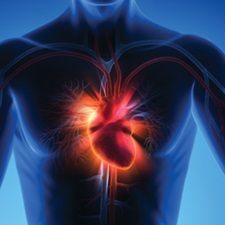Myocarditis and COVID-19
What is myocarditis?
Myocarditis is an inflammation of the heart muscle, typically caused by a viral infection. The inflammation can adversely affect the heart’s ability to pump blood and can cause an irregular heartbeat, which can lead to sudden cardiac arrest (SCA). Cardiac arrest is a significant health issue, affecting over 350,000 people in the U.S. each year.1 Left untreated, myocarditis can cause long-term heart damage and increase the risk of heart failure and other related health conditions.
Is there a link between myocarditis and COVID-19?
Studies from around the world report a connection between the COVID-19 virus and longer-term effects on the heart. One study published in the Journal of the American Medical Association showed that 78% of patients who recovered from COVID-19 showed ongoing heart abnormalities, and 60 percent suffered myocarditis.2
What are the symptoms of myocarditis?
Patients with mild cases of myocarditis may show no symptoms or may not notice them. According to the Mayo Clinic, common symptoms include shortness of breath, chest pain, fatigue, rapid heartbeat, and/or fluid retention. Symptoms of a viral infection could also include headaches, body aches, joint pain, and/or fever.
If you have symptoms of myocarditis, consult a physician right away. Your physician may recommend an electrocardiogram (ECG), a routine test that measures the heart’s electrical activity to detect abnormalities, or another diagnostic test.
Myocarditis and athletes
According to the Myocarditis Foundation, the disease is most common among otherwise healthy, athletic people between puberty and their early 30s. It affects males at twice the rate of females. It is important to raise awareness of myocarditis among young athletes and of the need for heart screenings, especially in light of the disease’s connection with the COVID-19 virus. In most cases, myocarditis will subside on its own over time, but patients — especially those who are also recovering from COVID-19 — should consult with their physician before returning to sports and other activities.
Myocarditis causes about 75 deaths per year in young athletes between the ages of 13 and 25, often without warning.3
How to prepare for cardiac emergencies
We don’t always know who may have myocarditis, COVID-19, a preexisting heart condition, or other risk factors, so it’s important to be prepared for unexpected emergencies — especially at schools, workplaces, athletic facilities, and other places where people gather.
If a sudden cardiac arrest occurs, the victim’s best chance of survival depends on immediate, high-quality CPR and access to a public AED. Consider an on-site AED your best insurance policy to protect employees, students, visitors, athletes, and others.
Since the beginning of the COVID-19 pandemic, out-of-hospital cardiac arrests (OHCAs) have increased significantly. One study in Italy found a 52% increase in OHCAs during a two-month period in the spring of 20204 compared to the same period in 2019. This increase in OHCAs, combined with the pandemic-related increase in EMS response times, makes early bystander intervention more important than ever.
Download this infographic to learn the signs and symptoms of cardiac arrest.
1“Statistical Update.” American Heart Association Website, www.cpr.heart.org/AHAECC/CPRAndECC/General/UCM_477263_Cardiac-Arrest-Statistics.jsp. Accessed 11 August 2017.
2Puntmann VO, Carerj ML, Wieters I, et al. Outcomes of Cardiovascular Magnetic Resonance Imaging in Patients Recently Recovered from Coronavirus Disease 2019 (COVID-19). JAMA Cardiol. Published online July 27, 2020. doi:10.1001/jamacardio.2020.3557
3https://www.myocarditisfoundation.org/wp-content/uploads/MyocarditisAndSuddenDeath.pdf
4COVID-19 Kills at Home: Increase in Out-of-Hospital Cardiac Arrests - American College of Cardiology (acc.org)


